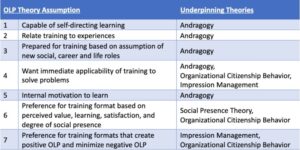Whether you’re working remotely or onsite, accountability can be a challenging issue for all levels of management. Enormous amounts of time and energy are used to enforce a top-down approach of holding individuals and teams accountable for meeting deadlines, objectives and key performance indicators.
What if you could create an environment that shifted most of that responsibility to the employees? What if you were able to encourage individuals to be accountable without constant monitoring and threats of negative consequences?
It’s possible if you create a culture of accountability. When combined, eight essential components produce an accountable, engaged, high-performing team prepared to meet current and future challenges. Higher accountability reduces conflict, confusion and turnover rates while increasing productivity, profitability and customer satisfaction. In addition, these benefits can be realized while significantly reducing the oversight burden of your supervisors and managers.
What is accountability?
According to author and CEO Peter Bregman, “accountability is not simply about taking the blame when something goes wrong. It’s not a confession. Accountability is about delivering on a commitment. It’s responsibility to an outcome, not just a set of tasks. It’s taking initiative with thoughtful, strategic follow-through.”
The important aspect of this definition is there is no mention of external control. Accountability is an inside job. It’s all about taking ownership of the decisions and actions you take to achieve a stated goal or objective. Therein lies the key to creating a culture of accountability: encouraging individuals to take ownership of their results and the consequences of those results.
That’s why language is important. Would you rather be accountable or held accountable? Which of those makes you feel good about what you’re doing? Which instills pride and confidence?
When you are held accountable, it sounds as if you have no control over the situation and that you must be restrained in some way to ensure compliance. Contrast that feeling with a desire to be accountable, to contribute to the organization’s success by completing important work and being appreciated. It comes down to the difference between command-and-control tactics with empower-and-enroll strategies.
The terms accountable and responsible seldom elicit positive feelings or responses. In fact, they most likely fill your supervisors and employees, alike, with a sense of dread. Those words are often associated with getting blamed, in trouble, embarrassed in front of the team, or used as the reason for a poor performance review or disappointing pay raise. Under those circumstances, why would anyone want to be accountable?
While this may seem insignificant or like wordsmithing, the distinction is real. Until there is a shift in the perceived meaning and application of accountability, it will continue to be seen as a mechanism for blame, shame, fear and anxiety. Employees will continue to perform at minimum levels to avoid disciplinary action but will not be inspired to contribute the discretionary effort needed to excel.
Sources of accountability
There are two main sources of accountability: internal and external. In most organizations, there is too heavy a reliance on external accountability. They have fallen prey to the belief that employees require detailed direction and close supervision to meet standards and follow the rules. With that mindset, it’s no wonder supervisors are overwhelmed, frustrated and burned out.
Those beliefs lead to additional mistakes. Managers set unrealistic expectations, micro-manage their teams, focus on the wrong metrics (e.g., time spent online or onsite rather than completed tasks or goals achieved), require cumbersome documentation and then execute “premature rescues” (stepping in before the employee can offer or try a new course of action).
All these actions, intended to enforce accountability, have the opposite effect. They create employees who resist, and in many ways actively avoid, taking responsibility for their performance and results. They grudgingly comply while complaining to peers or social media and/or seeking other job opportunities.
However, if the organization’s leadership is willing to shift its perspective and focus on internal accountability, the tide can turn. By hiring, developing and promoting self-motivated employees, they can reduce the level of oversight, increase engagement, exceed standards and build a generation of troubleshooters capable of solving more complex challenges. The table below illustrates the benefits of internal accountability and how it changes the manager/employee dynamics.

What is a culture of accountability?
In order determine an employee’s R-O-L-E in any given project or assignment it must be clear that each individual is:
- Responsible for completing the task or reaching the goal in a timely manner within the budget
- Obligated to answer to someone (e.g., peer, boss, customer, stakeholder)
- Liable for results (positive, negative, neutral) and rewarded accordingly
- Expected to account for, explain, or justify their actions and decisions
In a culture of accountability, employees fully understand:
- Their R-O-L-E on the team
- How their work contributes to the goals and mission
- Their targets & deliverables (output)
- How to collaborate
- Their priorities and how they align with business objectives
- How much autonomy and flexibility they have to achieve their goals
- How to evaluate and learn from mistakes without blame or finger pointing
In addition:
- They manage their workload to meet high priority business objectives
- They are empowered to take charge of their work
- They seek help when they need it
Given this description, how close is your organization to creating a culture of accountability? The next section will help you diagnose your current state and identify some areas for development.
How to build and maintain a culture of accountability
The most successful and highly engaged organizations proactively focus on these eight components to increase internal accountability:
- Purpose & Connection – Employees with a clear purpose and understanding of how they contribute to the team goals and bigger vision are more engaged and accountable.
- Goals & Expectations – Co-creating clear and realistic goals with your employees and colleagues will increase buy-in, commitment, innovation and productivity.
- Autonomy & Trust – By focusing on the outcome rather than the process and trusting them to do their best, employees are more creative and take more initiative to improve and streamline the workflow. They are also more comfortable identifying obstacles and challenges that need to be addressed proactively.
- Patience & Resilience – By accepting the learning curve and encouraging employees to learn from their mistakes, problems are solved more quickly and effectively while relationships are preserved and strengthened.
- Reward & Recognition – What gets rewarded gets repeated. By appreciating and rewarding employee performance and behaviors, they gain a sense of achievement and serve as a role model to others.
- Candor & Transparency – Create a work environment where honesty, respect, candor and transparency are valued and demonstrated at all levels of the organization. Sharing information and rationale behind policies allows each employee to make more informed decisions.
- Metrics & Tracking – Tracking progress and celebrating milestones ensures course corrections are implemented, goals are achieved and rewards and recognition are delivered appropriately. While the focus is on internal motivation, there is still a need for measurable objectives.
- Feedback & Coaching – By providing constructive feedback, employees know where they stand and can get the support they need to make course corrections. Through collaboration, employees gain insight and problem-solving skills that will serve them throughout their career.
By creating a culture of accountability,
- managers can reduce time dedicated to oversight and dealing with mediocre and poor performance
- employees gain critical skills, confidence and self-reliance
- the organization benefits from the increased engagement, performance and productivity while reducing burnout and turnover
That makes a culture of accountability a win-win-win scenario. What would be the biggest wins for you and your organization?












